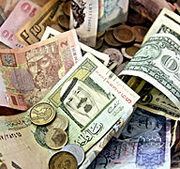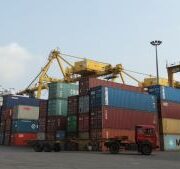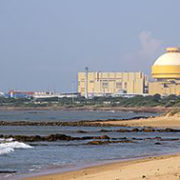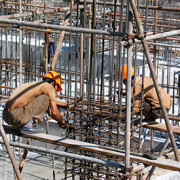Archive | April, 2016
Finance sector development
 Industry and trade, Regional cooperation and integration
Industry and trade, Regional cooperation and integration
 Energy
Energy
 Economics
Economics

Measuring the systemic risk contribution of international mutual funds

During the global financial crisis of 2007–2009, the importance of the scale and correlation of entities in interconnected financial systems, especially on what have become known as “too big to fail” institutions in the global financial system, was clearly evident and spotlighted.
RCEP – a life raft for trade liberalization in Asia

There seems to be a pushback against trade agreements in the post global financial crisis era. The Trans-Pacific Partnership (TPP) was signed in early 2016, but US presidential candidates have spared no effort criticizing it so near-term ratification is highly uncertain. The WTO Doha Round is in the deep freeze after 14 years of negotiations. Unilateral trade liberalization has virtually come to a standstill.
India: The rising star on the world’s energy horizon

Access to energy sources at low prices will continue to drive the world’s political agenda as energy is a component as well as an object of national power. The world’s primary energy consumption from commercial sources of energy has grown from approximately 8,600 million tons oil equivalent (mtoe) to 13,000 mtoe from 1995 to 2015 and is forecasted to grow approximately by the same amount to 17,300 mtoe by 2035.
Impact of a possible growth slowdown of the People’s Republic of China on emerging Asia: A general equilibrium analysis

With its rapid economic growth and integration into the global economy over the last 3 decades, the People’s Republic of China (PRC) has emerged as a major economic power and an important source of growth for the world economy. Now it is the second-largest economy at market exchange rates and the largest exporter in the world. In Asia, the PRC’s role as a growth pole is even more prominent. Over the last 10 years, spurred by strong processing exports and domestic demand, the PRC’s imports from Asia in US dollar terms have increased at an average annual rate of 9%. Strong demand from the PRC also supported prices of commodities exported by Asian and other emerging economies.


Search
Subscribe / Connect to Asia Pathways
Subjects
- Agriculture and natural resources
- Blog
- Capacity development
- Climate change
- Economics
- Education
- Energy
- Environment
- Finance sector development
- Gender
- Governance and public sector management
- Health
- Industry and trade
- Information and Communications Technology
- Infrastructure
- Miscellaneous
- Population
- Poverty
- Private sector development
- Regional cooperation and integration
- Sanitation
- Social development and protection
- Transport
- Uncategorized
- Urban development
- Video Blog
- Water
Recent Posts
- Artificial intelligence: A new driver for inclusive growth and development?
- Increasing trust in cross-border e-commerce and artificial intelligence
- Enhancing access to maternal and newborn healthcare in developing Asia
- Can electric vehicles lead the way to a sustainable future?
- Mitigating climate-related sovereign risk to accelerate action on the climate emergency




Recent Comments